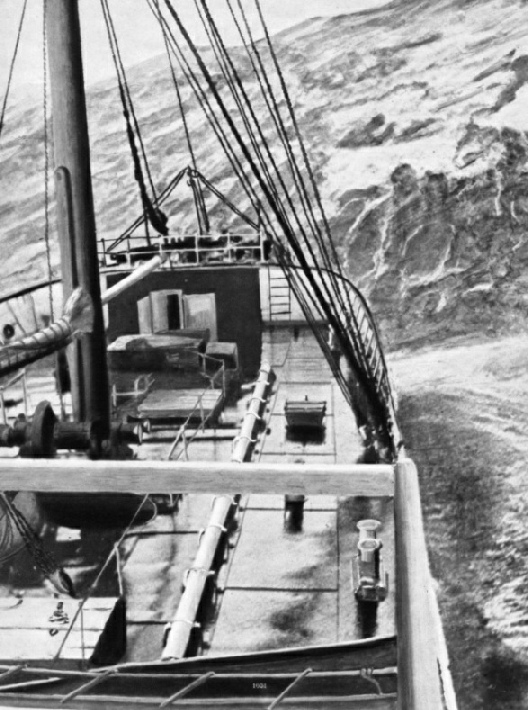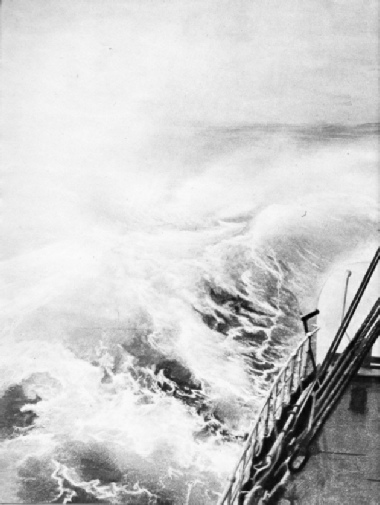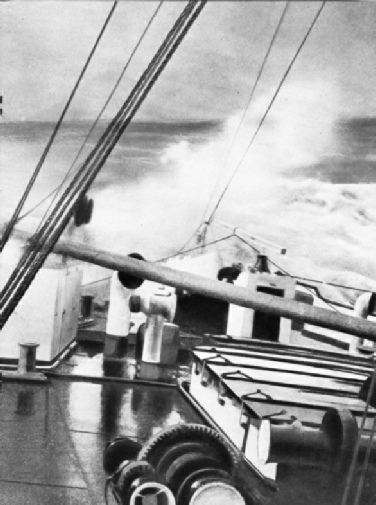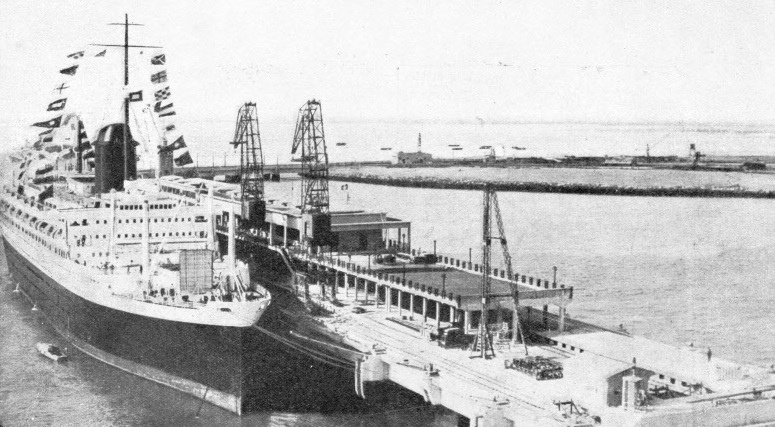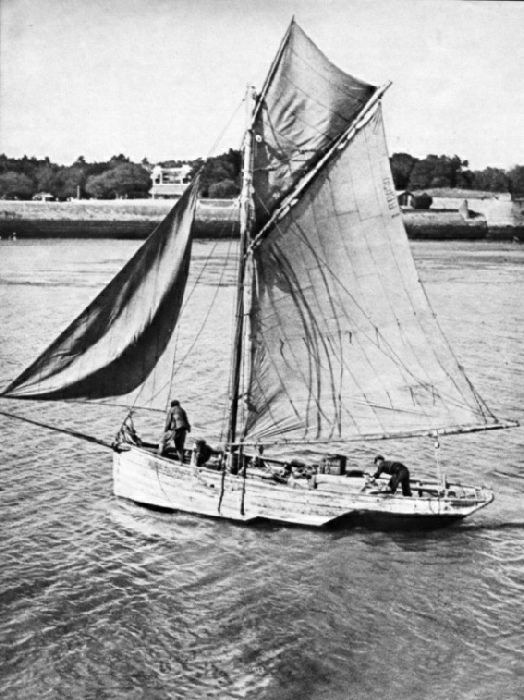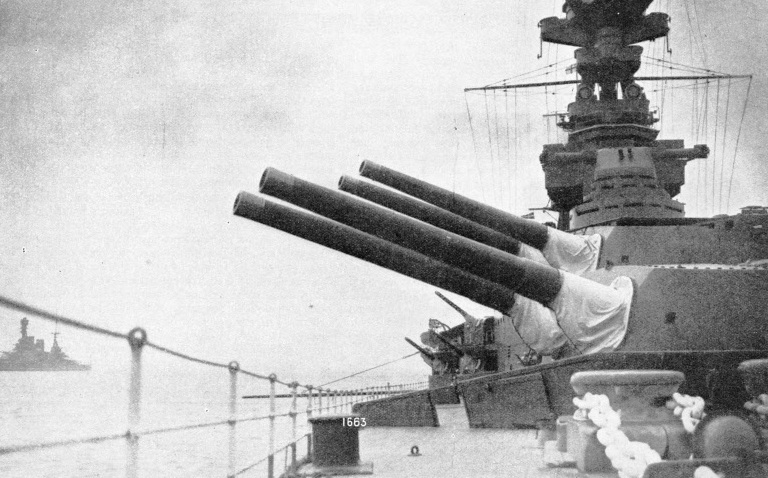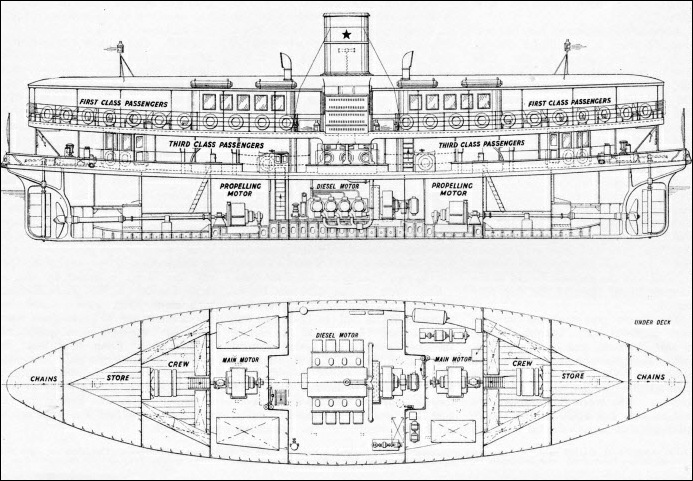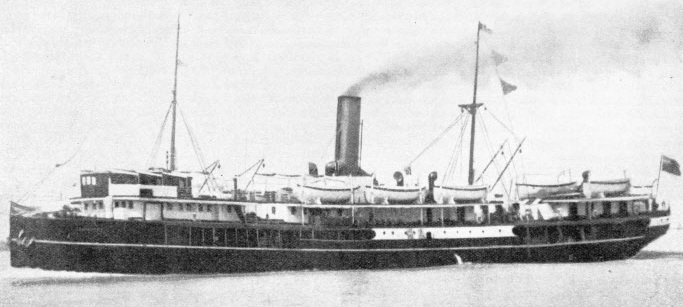
© Shipping Wonders of the World 2012-





Part 52
Part 52 of Shipping Wonders of the World was published on Tuesday 2nd February 1937.
It included a centre photogravure supplement illustrating the Motion of the Ship at Sea. It formed part of an article with the same title.
The Cover
“This week’s cover shows the four-masted Finnish barque Lawhill at Gravesend, after an adventurous 170 days’ passage from Australia in 1934. The Lawhill has a gross tonnage of 2,816, and is 317 ft 5 in long, with a beam of 45 feet and a depth
of 25 ft 1 in.”
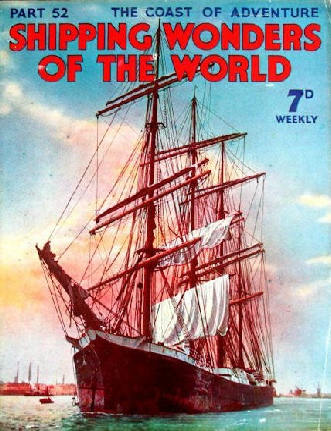
Contents of Part 52
Captain Bligh - The Navigator
Bremen and Bremerhaven
Romance of the Chronometer
Motion of the Ship at Sea
Motion of the Ship at Sea (photogravure supplement)
Coast of Adventure
The Ship and the Gun
The Double-Ended Diesel-Electric Ferry
Chinese Piracy
Bremen and Bremerhaven
Since the Middle Ages Bremen has been one of the most important of German ports and its trade, with that of Bremerhaven, has increased to a remarkable degree in modern times. This is the sixteenth article in the series on Great Ports of the World.
Captain Bligh - The Navigator
In this chapter, Lieut.-Com. R T Gould continues the story of Bligh’s 4,000 mile voyage after the mutiny in the Bounty. The article is concluded from part 51.
Motion of the Ship at Sea
The behaviour of a vessel under the stresses and strains to which she is subjected by the seas is a matter which continually exercises the skill and ingenuity of naval architects.
Combined Pitching and Rolling
“COMBINED PITCHING AND ROLLING are caused when a ship’s course is oblique to the direction of the seas. The pitching and heaving (vertical movement) is not excessive, but is aggravated by the rolling movement. This causes a corkscrew-like motion which can be exceedingly distressing, and involves complex strains on the vessel’s structure.”
Free Harbour Two at Bremen
“THE EXTENT OF THE QUAYS in Free Harbour Two at Bremen is 11,811 feet. The harbour is about 1,720 yards long and 130 yards broad. The Mosel (seen above) is a Norddeutscher Lloyd vessel of 8,428 tons gross. She has a length of 508 ft 6 in, a beam of 63 ft 7 in and a depth of 30 ft 2 in.”
Romance of the Chronometer
For many centuries the navigator was unable to calculate his ship’s longitude accurately because no scientist could devise a reliable means of timekeeping at sea. The problem was solved by a self-educated English carpenter, John Harrison, in 1735. This chapter on Harrison, the inventor of the chronometer, and describes his invaluable contribution to the science of navigation.
The Atlantic Coast of Adventure
Including the dreaded Bay of Biscay, the Atlantic coast-line from Ushant to the Strait of Gibraltar has been the starting-point from which Bretons, Basques, Spaniards and Portuguese have adventured on countless expeditions of trade and conquest.
In the Gironde Estuary
“IN THE GIRONDE ESTUARY, opening into the Bay of Biscay. Above is the Mole du Verdon, where passengers for Bordeaux, about sixty miles up the estuary, sometimes disembark, although large vessels can reach Bordeaux. The Gironde, formed by the confluence of the Garonne and the Dordogne, is some fifty miles long and from two to six miles wide. The Champlain (above) is a twin-screw vessel of 28,124 tons gross.”
Motion of the Ship at Sea: Photogravure Supplement
“AN ENORMOUS SEA approaching head-on often looks as if it will overwhelm the vessel. Surprisingly, however, the bows will rise to the sea, unless it is dangerously steep. When the vessel is on the crest of the wave, her bows and stern may be unsupported and the ship is aid to he “hogging”. When she is supported by seas at either end and the centre is without support she is said to be “sagging”. This alternate hogging and sagging imposes terrific strain, even on a modern steel ship.”
Near La Rochelle
“A FISHING BOAT NEAR LA ROCHELLE. This Biscayan seaport lies in a bay protected by the islands of Ré and Oléron, and has a fine harbour. A new harbour at La Pallice, three miles west, is one of the nest on the west coast of France. Biscayan fishermen are engaged in the sardine and the tunny fisheries. Tunny fish are sometimes over 10 feet long and weigh half a ton. The canning of sardines and the canning of tunny are important industries along the coast.”
The Ship and the Gun
The developments of warship design has been largely influenced since the introduction of gunpowder by continuous alterations in the size, number and type of the naval weapons. This chapter complements the one on Big Guns in Action.
The Main Armament of HMS Hood
“15-IN AND 5.5 IN GUNS constitute the main armament of HMS Hood, a battle cruiser of 42,100 tons displacement. The Hood has eight 15-in and twelve 5.5 in guns. Her armament includes, in addition, four 4-in anti-aircraft guns, twenty-three smaller guns and six torpedo tubes.”
The Double-Ended Diesel-Electric Ferry
This is one of the most important vessels afloat with a horizontal diesel engine-used for main propulsion. Horizontal prime movers were at one time an important part of marine propulsion before the development of the vertical reciprocating steam engine. The diesel engine so far has followed vertical reciprocating practice, but there are many instances in which the horizontal engine has big advantages, particularly where stability is a prime factor and weights have to be kept low. The ship illustrated below is the Electric Star, built in 1933 by the South China Motorship Building and Repairing Works for the Star Ferry Company, Hong Kong. She is engaged on arduous work between Hong Kong and Kowloon. From the drawings it will be seen that the ship is a double-ended single-deck unit, the ends of the hull being made up of castings which are in effect a combination of stern frames and stem bars. The stem bars are flush with the fore end of the balanced rudders which operate behind or in front of the screw according to the direction in which the ship is moving. There are six bulkheads altogether so that the hull is particularly well subdivided against all possibilities of damage by collision.
The ship is a side-loading vessel from the top deck as well as from the main deck and this means that the utmost stability is needed, a characteristic which is amply given by distribution of weight in the propelling machinery. Diesel-electric propulsion is used, power being generated
by a Crossley-Premier horizontally opposed diesel rated for 400-600 brake horse-power at 200-300 revolutions, coupled to a BTH generator and exciter giving current to an
electric propelling motor at either end. When one propeller is in operation, the other is turning at reduced speed. In addition to helping to overcome water friction this also
does a certain amount of useful work. The ship has an overall length of 116 feet, a beam of
28 feet and a depth of only 9 feet. The gross tonnage is 164. There is ample beam and the construction of the ship is such that sturdy, deep seatings for the engine are possible. The engine is a slow-running one, and this is admissible in a ship of this type, in which light weight would be a definite disadvantage. The main generator unit is in a special room separated at either end by staggered watertight, bulkheads from the propelling motors. The generating part of the equipment is thus absolutely self-contained; here too are circulating pumps, bilge pumps, oil fuel transfer pumps and the main switchboard. The vessel attains a speed of
10 knots in service. This is the fortieth article in the series on Merchant Ship Types.
(Page 1664)
Chinese Piracy
Although piracy has been stamped out in Western waters, the coastal waters and rivers of China are infested with pirates who are not deterred by the elaborate precautions which are nowadays made against attack. This article is concluded in part 53. It complements the article on Gunboat Patrols in China.
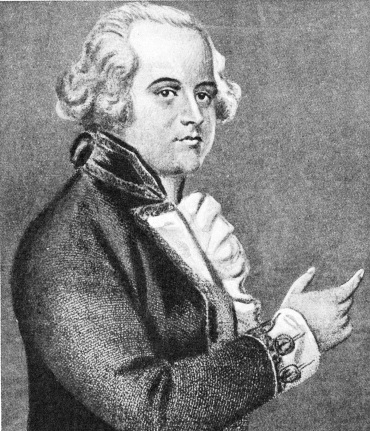
Captain William Bligh
“CAPTAIN WILLIAM BLIGH was born in 1754. At the age of sixteen he entered the Royal Navy as an able seaman and won his commission without influence, by ability alone. He became a distinguished navigator and surveyor, and was master of Cook’s Resolution in Cook’s third voyage of exploration. Bligh was Governor of New South Wales in 1805-10 and died a
Vice-Admiral of the Blue on
December 7, 1817.”
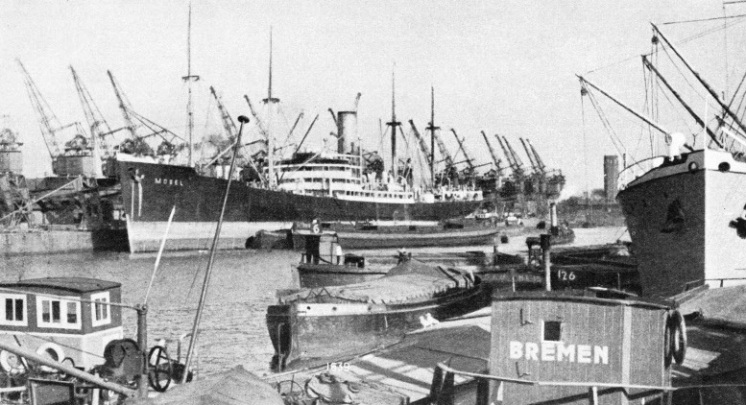
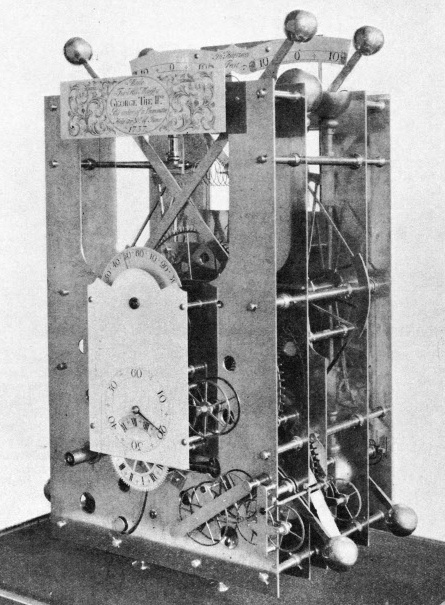
Harrison’s Second Chronometer
“MORE ROBUSTLY BUILT than the first, Harrison’s second chronometer has its mechanism housed between stiff plates of brass. This model was never tried at sea, as the inventor set to work on a new timekeeper immediately after the second had been completed. No. 2 chronometer weighs 103 lb.”
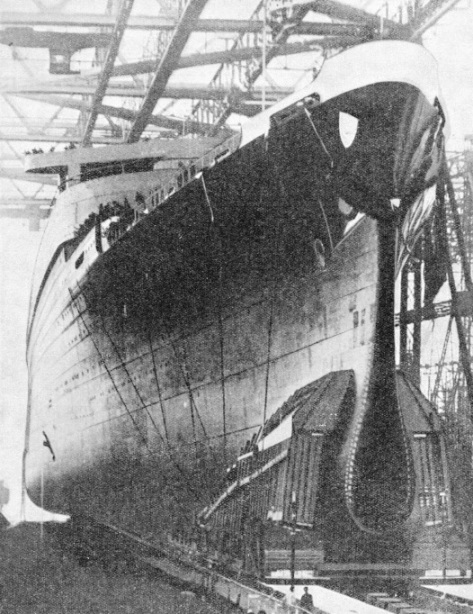
The Bulbous Bow
“THE BULBOUS BOW has the effect of diminishing pitching by giving increased buoyancy forward. This form of bow first came into general prominence on the appearance of the Norddeutscher Lloyd liners Bremen and Europa. The bulb can be clearly seen in this photograph of the Europa at her launch.”
